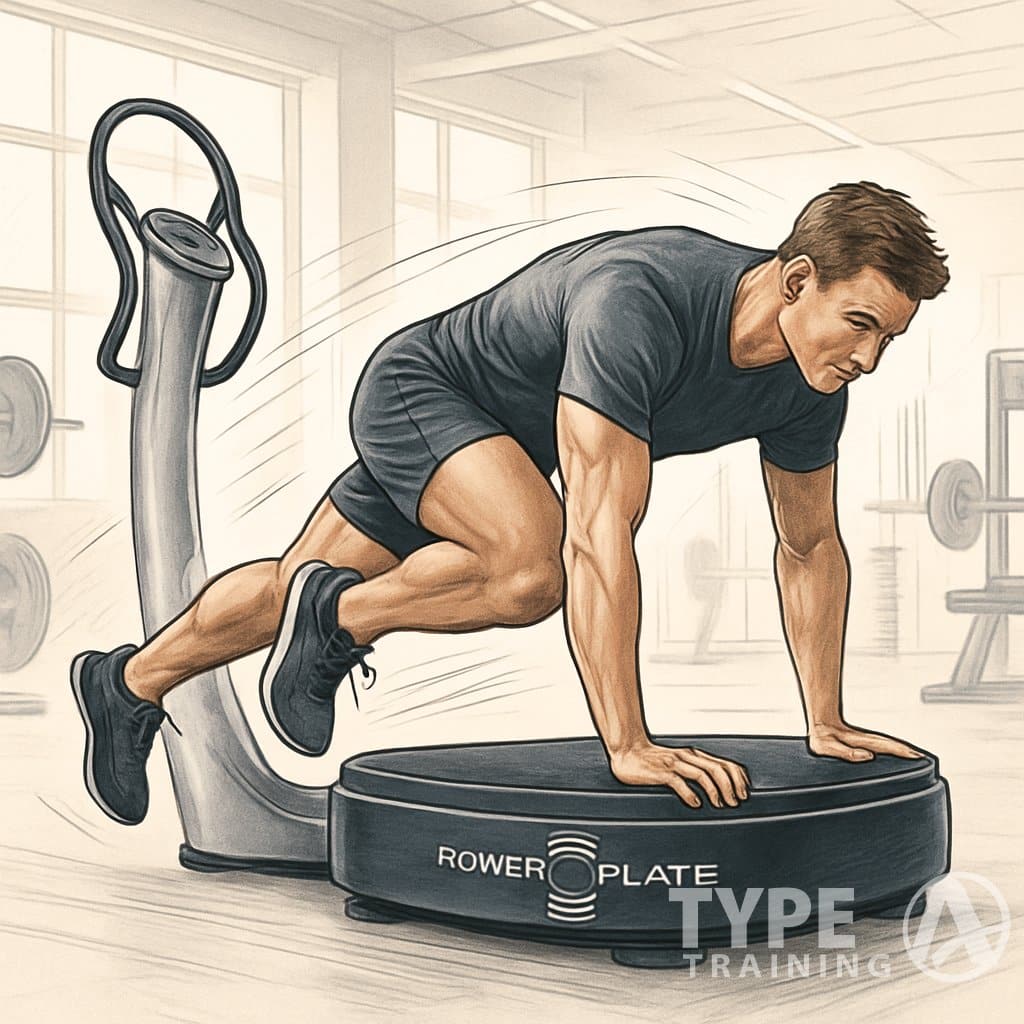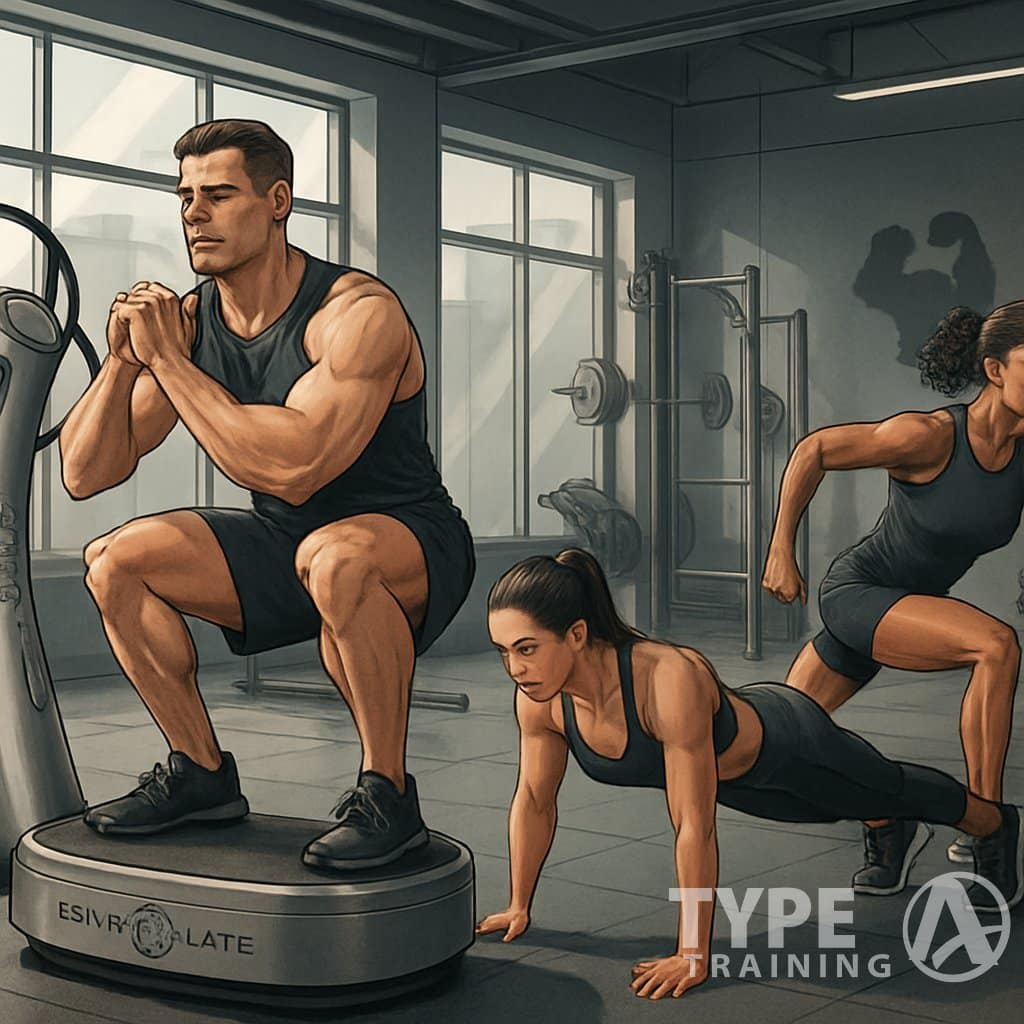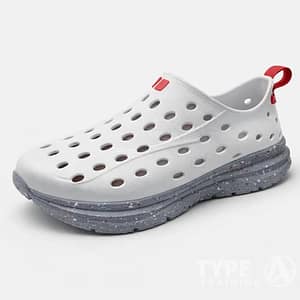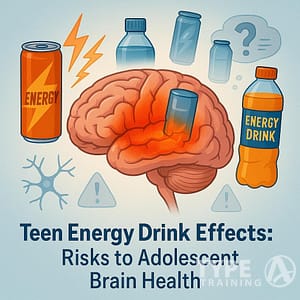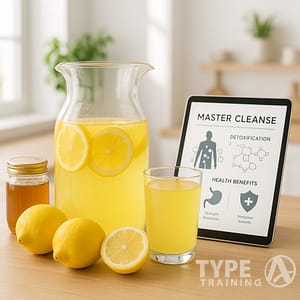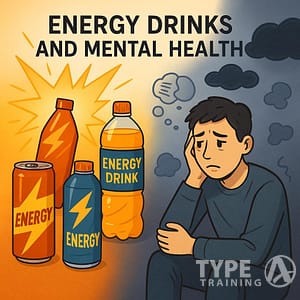Advanced Power Plate workouts push your training beyond the basics. Vibration challenges your muscles in new ways.
Incorporating Advanced Power Plate Workouts into your routine can truly elevate your fitness journey.
Instead of just sticking with traditional strength moves, you can engage more muscle fibers. You’ll also improve balance while building power.
Use advanced Power Plate exercises to increase strength and get more out of every workout.
Popular posts:
These Advanced Power Plate Workouts not only challenge your body but also enhance your overall performance.
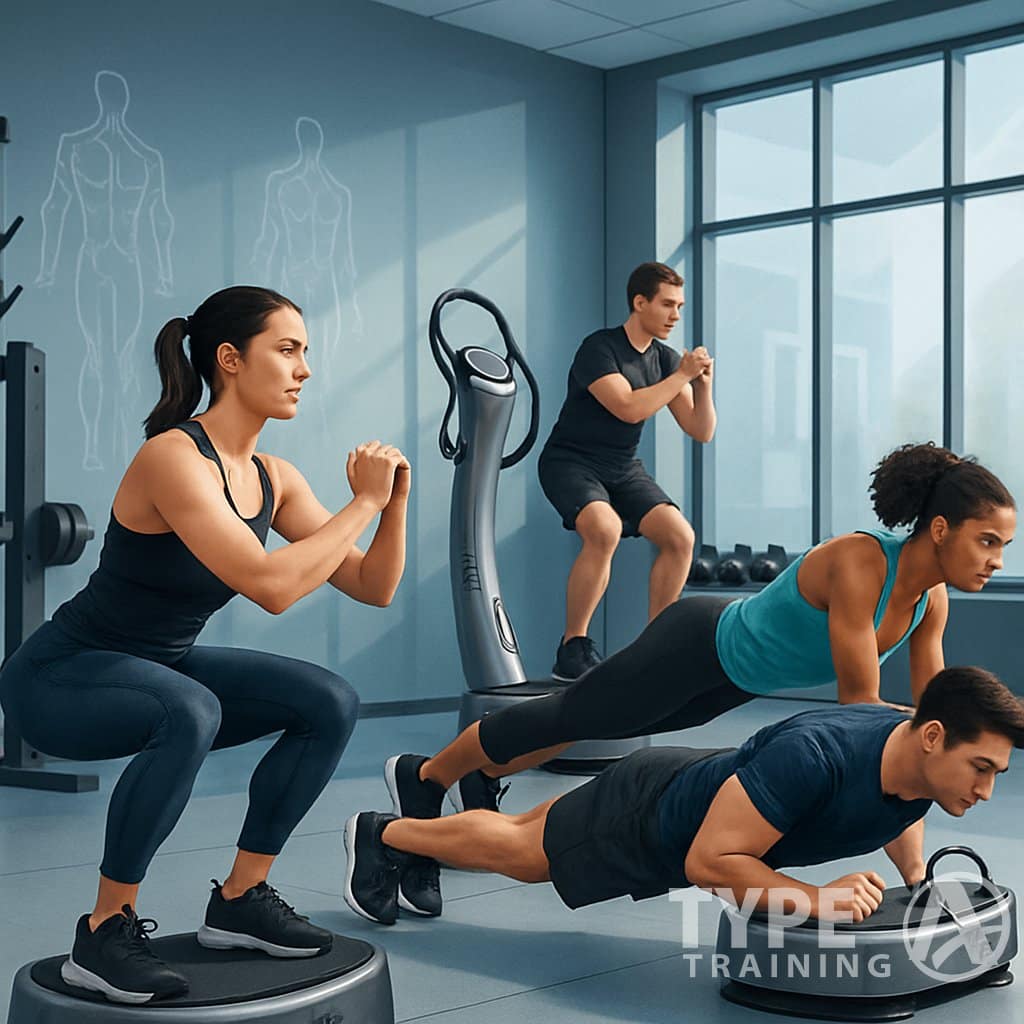
Adding focused movements on the Power Plate creates higher muscle activation and a bigger demand on your core. This makes training more efficient, helping you progress faster without spending extra time in the gym.
Many athletes find that Advanced Power Plate Workouts lead to faster gains in strength and stability.
When you move with control and good form, the Power Plate supports both strength and stability. You’re not just working harder—you’re working smarter.
You can target specific goals with these workouts. Maybe you want stronger legs, a solid core, or just to feel more athletic overall.
By including Advanced Power Plate Workouts in your regimen, you target specific fitness goals more efficiently.
Key Takeaways
- Power Plate training builds strength and performance through advanced vibration-based exercises
- Core stability and muscle activation improve with focused movements on the platform
- Structured programming helps you progress safely while maximizing results
Understanding Power Plate and Vibration Training
Understanding the mechanics of Advanced Power Plate Workouts is crucial for maximizing their benefits.
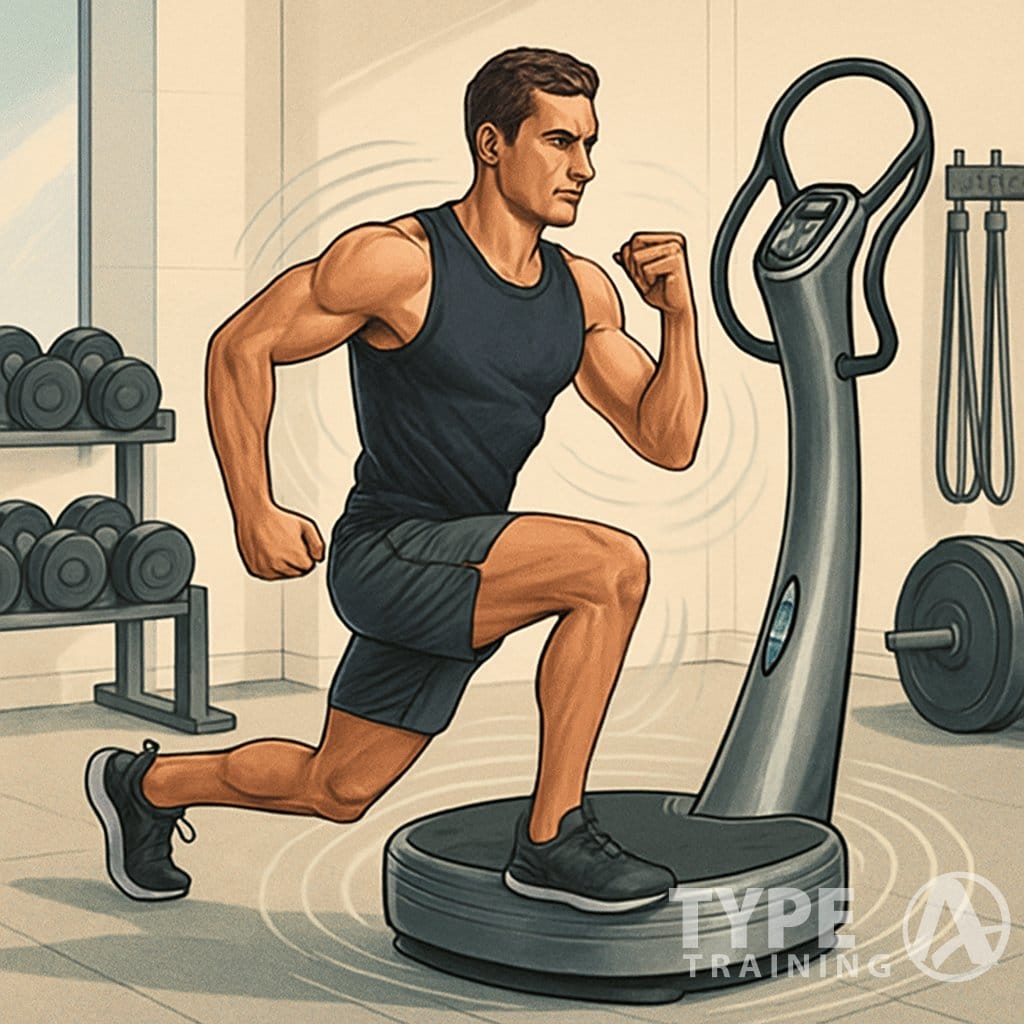
A Power Plate uses controlled vibrations to stimulate your muscles in ways that traditional exercise just can’t. When you stand, sit, or move on the platform, you engage more muscle fibers and boost circulation.
You also add intensity to your workouts without having to increase weight or resistance. That’s pretty useful if you want to train hard but keep things joint-friendly.
What Is a Power Plate?
A Power Plate is a vibrating platform designed for whole body vibration (WBV) training. Unlike a regular floor, it moves in multiple directions—up and down, side to side, and front to back.
These fast vibrations create small, constant shifts in your body position. Your muscles react to every little movement.
Every exercise during your Advanced Power Plate Workouts becomes more effective through vibration technology.
Even simple moves like squats or planks become a challenge. You can stretch, do balance drills, or use it for recovery.
The platform’s compact size means it fits in a home gym or a professional training space. You can mix it with bodyweight moves, resistance bands, or weights.
It’s great for beginners and advanced athletes who want to improve strength and performance. There’s a lot of versatility here.
Principles of Vibration Training
Vibration training works by sending mechanical signals through your body. When you move on the platform, these signals travel fast and make your muscles contract and relax over and over.
The frequency (how fast it vibrates) and amplitude (how far it moves) control the intensity. Crank it up for more challenge, or keep it low for something gentler.
You can adjust these settings to match your fitness level and goals. It’s a flexible system.
Vibration training adds an involuntary muscle contraction to your usual voluntary effort. Your body automatically reacts to the stimulus, making every exercise more efficient.
Benefits of Whole Body Vibration
Whole body vibration offers several benefits if you use it right. It improves circulation by boosting blood flow during and after exercise.
Implementing Advanced Power Plate Workouts into your routine can greatly enhance recovery.
That’s helpful for warming up and promoting recovery. You’ll probably notice gains in balance and stability, too.
The constant adjustments on the platform train your core and supporting muscles. Over time, you move better and feel steadier.
Strength and flexibility can improve as well. Activating more muscle fibers at once makes even basic exercises tougher.
You get to train at higher intensity without loading up your joints. That’s a win if you want results without extra wear and tear.
Your flexibility may improve significantly with Advanced Power Plate Workouts.
Muscle Activation Mechanisms
The big effect of the Power Plate is increased muscle activation. Each vibration triggers a reflex contraction called the tonic vibration reflex.
This reflex happens automatically and recruits both slow-twitch and fast-twitch fibers. Your muscles fire repeatedly, so you get more contractions in less time than with regular training.
You also get more engagement from stabilizing muscles. These often get overlooked in standard workouts.
The platform challenges your neuromuscular system, too. Your brain and muscles have to coordinate quickly to keep you balanced.
This improves motor unit recruitment and can boost strength, speed, and overall athletic performance. Combining voluntary effort with these reflex contractions trains your body in a more targeted way.
Core Strength and Performance Benefits
Integrating Advanced Power Plate Workouts into your training can lead to improved core strength.
Training on a Power Plate pushes your muscles in ways you might not expect. You build strength, power, and coordination, while also supporting recovery.
These results affect how you move and perform, whether you’re in the gym or just going about your day.
Enhancing Strength and Power
The vibration platform makes your muscles contract rapidly. Your core and surrounding muscles have to work harder to keep you steady.
Over time, this builds strength and endurance. Moves like planks, squats, or push-ups activate more muscle fibers than when you do them on the floor.
Athletes use vibration training to improve explosive power. The extra muscle recruitment helps you generate force faster.
This translates to better performance in sports that rely on speed and strength.
Key benefits include:
Consider the advantages of Advanced Power Plate Workouts for your overall athleticism.
- Increased muscle activation
- Improved force production
- Greater efficiency in strength training
Improving Balance and Flexibility
The Power Plate’s unstable surface challenges your balance. Your core has to stay engaged to keep you upright.
This builds stability for everyday movements like walking, bending, and lifting. Flexibility gets a boost, too, because vibration increases blood flow and warms up muscles.
Stretching becomes more effective and you feel less stiff. Add dynamic stretches on the plate for even better range of motion.
Better balance and flexibility lower your risk of falls and injuries. They also help in activities that need coordination, like running, cycling, or yoga.
Practical applications:
-
- Standing balance holds
- Side lunges with vibration
Advanced Power Plate Workouts can also enhance your flexibility.
- Dynamic stretches for hips and hamstrings
Reducing Muscle Fatigue
Vibration training can help reduce muscle fatigue by improving circulation. More blood flow means your muscles get oxygen and nutrients faster.
This supports quicker recovery after tough workouts. Doing core exercises on the plate also fires up both large and small stabilizing muscles.
You build endurance without putting too much stress on your joints. Many people notice less soreness after these workouts.
Advanced Power Plate Workouts contribute to quicker recovery times, particularly after intense sessions.
The vibrations help clear out waste products like lactic acid. You can get back to your next workout sooner, and with less discomfort.
Effects on fatigue:
- Better circulation
- Reduced soreness
- Faster recovery time
Rehabilitation Applications
Power Plate training works well in rehab settings because it’s low-impact. The vibrations activate muscles without heavy loads, making it a good choice for injury recovery.
Core-focused moves on the plate help rebuild stability around your spine and hips. That’s important if you’ve got back pain or limited mobility.
You can use the plate to slowly restore strength after surgery or during physical therapy. Adjust the settings to control intensity and progress at your own pace.
Rehab benefits:
- Low-impact muscle activation
- Improved joint stability
- Controlled progression for recovery
Key Advanced Power Plate Exercises
Incorporate Advanced Power Plate Workouts into your weekly training for optimal results.
Using the Power Plate for advanced training lets you challenge both strength and stability. You can target big muscle groups like the legs, chest, and shoulders, but don’t forget the smaller stabilizers in your core and calves.
Advanced Power Plate Workouts: Unlocking Your Full Potential
Squats on the Power Plate feel more intense because your muscles have to stabilize against the vibration. Stand with your feet shoulder-width apart, lower into a squat, and hold for a few seconds before coming back up.
The vibration pulls in more muscle fibers in your quads, hamstrings, and glutes. For variety, try jump squats—explode upward and land softly back on the plate.
This builds power and coordination. Split squats are another option, with one foot on the platform and the other behind you.
You’ll increase unilateral strength and balance. Side lunges on the plate target the inner thighs and hips.
Pair Advanced Power Plate Workouts with traditional strength exercises for enhanced gains.
Keep your chest up and move slowly to stay in control. These moves strengthen your lower body and improve joint stability.
Chest, Shoulders, and Triceps Routines
Push-ups on the Power Plate are tough but effective. Place your hands on the platform, brace your core, and lower your chest toward the plate.
The vibration hits your chest, shoulders, and triceps harder than regular push-ups. Want a challenge? Try decline push-ups with your feet on the plate and hands on the floor.
This shifts more work to your shoulders and upper chest. You can also do triceps dips by sitting on the edge, placing your hands by your hips, and lowering your body.
For shoulders, grab light dumbbells and do plate presses while standing on the platform. The vibration makes your stabilizers work overtime, which is great for shoulder endurance.
Plank and Core Stability Work
Utilizing Advanced Power Plate Workouts in your routine can greatly improve your core stability.
Planks on the Power Plate ramp up core activation. Put your forearms or hands on the platform, keep your body straight, and brace your abs.
Even short holds are a serious challenge for your deep abs. To make it harder, lift one leg or arm during the plank.
Your obliques and lower back will have to stabilize even more. Try side planks with one forearm on the plate to hit the lateral core.
Another good one is the mountain climber on the plate. Hands on the platform, drive your knees toward your chest—keep it controlled.
You’ll get core stability and a bit of cardio, too. Not a bad combo.
Calves and Glutes Activation
Standing calf raises on the Power Plate help strengthen your calves and improve ankle stability. Stand tall with the balls of your feet on the platform, raise your heels, and hold at the top.
Focus on Advanced Power Plate Workouts to improve your overall muscle activation.
Lower back down and repeat. For glutes, do hip bridges with your feet on the plate and your shoulders on the floor.
Drive your hips up and squeeze at the top. The vibration gets more muscle fibers involved and helps your hips get stronger.
You can also do step-ups by putting one foot on the plate and driving through your heel to lift up.
This works your calves and glutes, and helps with balance. Add light weights if you want to up the challenge.
Programming Advanced Workouts for Strength Gains
Advanced techniques such as Advanced Power Plate Workouts can increase your performance.
You need to balance structured training, progressive overload, and effective use of the Power Plate to build strength. Focus on muscle activation, manage fatigue, and apply intensity in a way that supports steady gains in power and performance.
Structuring Your Training Sessions
Start your session with a clear order: compound lifts first, accessory work second, Power Plate drills last. This way, you tackle heavy loads while you’re fresh, then finish with vibration training to hit stabilizers and smaller muscle groups.
Incorporating Advanced Power Plate Workouts into your sessions is highly beneficial.
Aim to keep sessions between 60 and 75 minutes to avoid extra fatigue. Use the Power Plate for two or three short blocks, each about 30–60 seconds per exercise.
Pair Power Plate drills with moves like squats, push-ups, or planks. This combo ramps up muscle activation without dragging out your workout.
Try alternating training days between heavy lifting and lighter recovery sessions. That way, you can push hard but still give your body time to recover.
A simple weekly split could look like this:
- Day 1: Lower body heavy lifts + Power Plate squats
- Day 2: Upper body heavy lifts + Power Plate push-ups
- Day 3: Recovery and mobility using vibration training
Progression and Intensity Strategies
If you want to keep getting stronger, you’ll need progressive overload. Gradually bump up the weight, reps, or time under tension.
Consider Advanced Power Plate Workouts as part of your progression strategy.
On the Power Plate, you can progress by raising the vibration frequency, working longer, or adding resistance like dumbbells.
Pay attention to muscle fatigue. If vibration work leaves you wiped out before you hit the barbell, scale it back a bit.
Strength comes from steady progress, not burning out every session.
Use periodization to organize your training intensity. For example:
- Week 1–3: Moderate weight, higher reps
- Week 4: Deload with fewer sets
- Week 5–7: Heavier weight, lower reps
- Week 8: Focus on recovery and Power Plate mobility
Integrating Power Plate With Traditional Strength Training
Don’t swap out heavy lifting for the Power Plate. Traditional strength training—think squats, deadlifts, presses—should stay at the core of your routine.
Utilizing Advanced Power Plate Workouts can enhance the results of traditional strength training.
Use the Power Plate to boost neuromuscular activation before your main lifts. For instance, do two sets of Power Plate squats before you grab the barbell. That little extra activation can help with muscle recruitment and stability.
Try using vibration for accessory work too. Planks, lunges, or calf raises get tougher on the plate, and you don’t need to pile on more weight.
This approach strengthens stabilizers and helps with balance, but doesn’t overload your joints.
Save Power Plate moves for warm-ups, finishers, or lighter recovery days. Let your main lifts take center stage, but keep the perks of vibration training in the mix.
Optimizing Performance and Safety
You can cut down on muscle fatigue and injury risk by prepping before you train and supporting recovery afterward. Good routines keep you flexible and make Power Plate sessions more effective, whether you’re training for performance or rehab.
Warm-Up and Cool-Down Techniques
A Power Plate warm-up should get your muscles firing and boost circulation. Start with low-frequency vibration and basic moves like light squats, calf raises, or gentle lunges.
This warm-up is essential before starting your Advanced Power Plate Workouts.
This gets your joints and muscles ready for more intense work.
Dynamic stretches are great before you train. Hip openers and arm swings on the platform help you move better and loosen up stiff spots.
After your workout, switch to cool-down stretches. Go for slow, controlled stretches like hamstring or quad holds while the plate vibrates on low.
This helps your muscles relax and keeps you flexible.
Don’t forget about your breathing during cool-downs. Deep, steady breaths help with circulation and calm your nervous system, which makes recovery smoother.
Preventing Injury and Enhancing Recovery
Ease into higher Power Plate settings instead of jumping right in. Gradually increase vibration levels and make exercises harder step by step.
Focus on good form. Keep your spine neutral, knees tracking over your toes, and your core braced.
Bad posture under vibration just puts extra strain on your joints and muscles.
Proper form is crucial during your Advanced Power Plate Workouts.
For recovery, use the Power Plate’s massage or relaxation modes. Target tight areas like calves, hamstrings, and your lower back to ease soreness after tough sessions.
Don’t overlook hydration and sleep. Pairing vibration training with enough rest and solid nutrition helps your body rebuild and recharge for your next workout.
Frequently Asked Questions
Explore the various benefits of Advanced Power Plate Workouts in fitness.
You can use a vibration plate to target strength, balance, or recovery. The results you get depend a lot on how you train, how often, and which exercises you pick.
What are the best vibration plate exercises for enhancing core strength?
Incorporating Advanced Power Plate Workouts can significantly improve core strength.
Planks, side planks, and bridges are all solid core moves on a vibration plate. The constant vibration forces your core to work harder just to keep you stable.
Try adding small moves like leg lifts or knee tucks to make it even tougher.
How can beginners effectively incorporate vibration plates into their workout routines?
Keep it simple at first. Start with 10 to 15 minute sessions using basic moves like squats, lunges, or push-ups on a low setting.
Focus on form and balance before you worry about adding time or cranking up the intensity.
Can vibration plate workouts significantly contribute to weight loss, and how?
Begin your journey with Advanced Power Plate Workouts for optimal results.
Vibration plates can help with weight loss by increasing muscle activity and burning more calories during exercise. They work best as part of a bigger routine—mix them with cardio, strength training, and a balanced diet.
Don’t expect them to replace full-body training on their own.
What is the equivalent distance run for a 10-minute workout on a vibration plate?
There isn’t really a direct running distance equivalent for vibration plate training. The way it stimulates muscles is different from aerobic exercise.
Think of it as a strength and conditioning tool, not a stand-in for running mileage.
What are the scientifically proven benefits of using vibration plates for fitness?
Research shows that Advanced Power Plate Workouts can enhance performance.
Research shows vibration training can boost muscle activation, balance, and flexibility. Some studies suggest it helps with circulation and recovery after exercise.
You’ll see the best results when you use it alongside regular workouts.
How often should one use a vibration plate to see noticeable improvements in performance?
You can hop on a vibration plate about three to four times a week for training. Some folks even use it every day just for warm-ups or to help with recovery.
Using Advanced Power Plate Workouts regularly will yield noticeable improvements.
Honestly, it’s not about marathon sessions—sticking with shorter, regular use usually works better than going all-in just once in a while.

